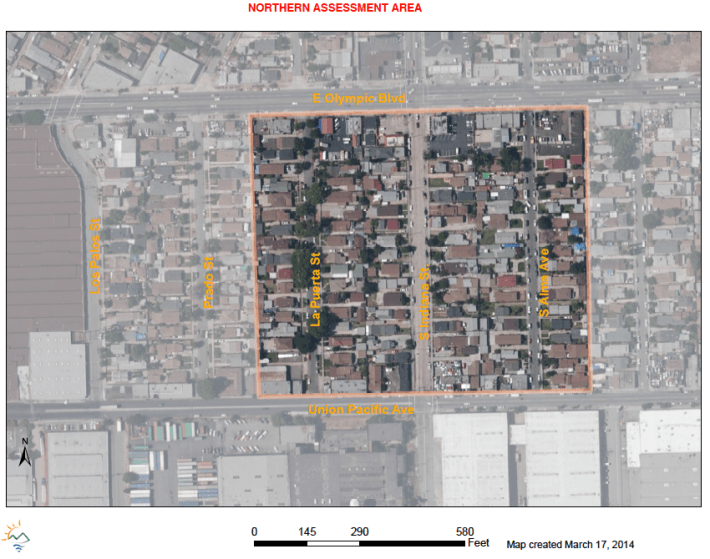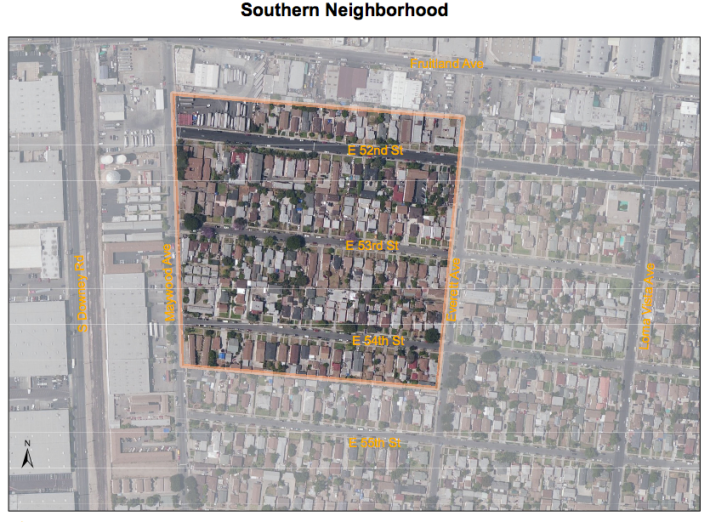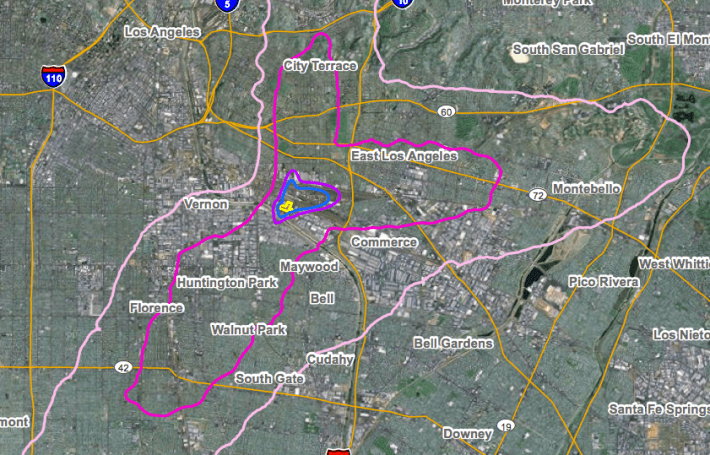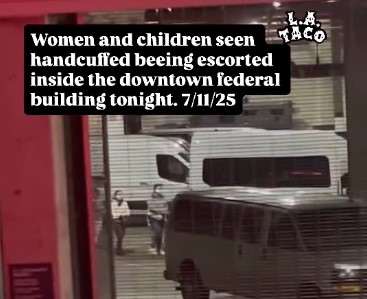
Good news, good people of Maywood, Boyle Heights, and East L.A. who live within the limited assessment areas (see one, above)! The Department of Toxic Substances Control (DTSC) wants you to know that, per a Stipulation and Order settlement reached on November 6 with embattled Vernon-based lead-acid battery recycling plant Exide, if Exide has contaminated your yard with lead, it can be cleaned up at no cost to you! (emphasis theirs)
Hooray!
Er, wait.
If your yard has been contaminated with lead, you're probably not too happy about it, given the connection of lead to developmental delays and learning difficulties in children and a host of physical ailments. And the fact that, per the settlement, Exide has up to five years to clean up your yard and home is probably not helping you feel any better about your situation. Nor is the knowledge that only two yards have been cleaned up since the announcement in February that almost all of the 39 yards and 2 schools tested in the first round of sampling had lead levels in excess of 80 parts per million (the level at which the DTSC requires a clean-up and the state recommends health-related testing).
If your yard doesn't fall within one of the two (rather small) assessment areas -- the designated areas the South Coast Air Quality Management District studies have revealed "to be most likely impacted by Exide’s emissions" -- it could be a very long time before your is soil tested or any contamination is cleaned up on Exide's dime.
According to the settlement, some time in the next four and a half years, Exide must submit "a Residential Corrective Measures Study to address all properties impacted by Facility operations that were not investigated or remediated during the initial five-year period" or part of the recently approved Interim Measures Work Plan (IMWP) Exide drafted to guide its clean-up procedures.
Any contamination found on any additional properties, as best I can tell from the settlement, would need to be addressed within a 10-year period and paid for with funds set aside by Exide for that purpose (see pp. 11-12 for details; clarification on future remediation plans will follow next week).

Which is something that may not sound as reassuring as the DTSC hopes, given their official responses to public comments on the draft IMWP, released this past Wednesday, November 19th (two weeks after the settlement was made), and the particularly large emissions footprint Exide is estimated to have (below).
Members of surrounding communities who asked to have their properties tested but whose residences fell outside the designated assessment areas were told only that their addresses would be "retained as an alternative address to be sampled should additional information regarding the extent of lead beyond these two assessment areas be required" (emphasis added).
No reference was made to the stipulations in the settlement agreement and both press releases and other official documents (such as the clean-up FAQ answers) released after the settlement reiterate that only those residing within assessment areas will be tested.

More unsettling still is news that, after the most recent round of soil sampling in the two assessment areas, all 62 of the samples that were tested (104 were taken, results on 42 samples are pending) had elevated lead concentrations.
Specifically, according to the DTSC, "12 residential yards have one or more samples with lead levels that exceed 1,000 parts per million and 50 residential yards show lower levels of lead, but were still over DTSC’s 80 parts per million clean-up."
Per the IMWP, Exide will first be required to address the conditions at the 12 most contaminated sites by removing the soil, doing dust monitoring, cleaning the interiors of the homes, and then restoring the yards. They will then move on to the other 50 sites, while continuing to reach out to the property owners within the assessment areas. (DTSC reports just over 200 owners have been contacted, but only half have responded thus far.)
As might be gleaned from the above, the Stipulation and Order settlement appears to have made few of the stakeholders happy.
Communities for a Better Environment (CBE), an organization which has actively battled to get authorities to address Exide's numerous violations over the better part of a decade or more, released a statement declaring their disappointment in the outcome. They argued that by not adequately engaging the affected communities on the settlement, DTSC was leaving families unprotected. Not only might the $9 million in funds set aside for community clean-ups be inadequate, they charged, but it was unacceptable that families within the limited assessment areas might be asked to wait as long as five years before contamination was identified and cleaned up from their yards. Meanwhile, those outside of the assessment areas are effectively denied any form of recourse for the time being.
County Supervisor Gloria Molina was also dissatisfied with the settlement, charging in her motion before the County Board of Supervisors last week that, given Exide's status as the state's "worst lead polluter" and DTSC's inability or lack of will to enforce egregious violations of environmental regulations, the Board look into the possibility of suing to shut Exide down.
According to KPCC, the County Board did vote "to give its top lawyer the authority to file a lawsuit against Exide Technologies" in a closed session this week.
What form that litigation will take, however, is as yet unclear.
Currently, the plant is idle -- aside from internal clean-up and upgrade work -- having been shut down in March. The DTSC is reviewing its third application for a formal operating permit and has until the end of 2015 to rule on whether Exide (finally) passes muster or will have to close its doors for good.
* * * *
For more information, please check out the DTSC's webpage dedicated to Exide. For more on the specifics of the Stipulation and Order settlement, including the $38.6 million set aside for on-site clean-ups and plans for addressing other hazardous waste violations, please click here and here.
*This post has been edited to reflect a clarification made by the DTSC that provisions were made in the Stipulation and Order agreement that Exide would be asked to address contamination outside the assessment areas. I will be speaking with DTSC on Monday about the specifics of these provisions, as they were unable to provide me with that information today.






